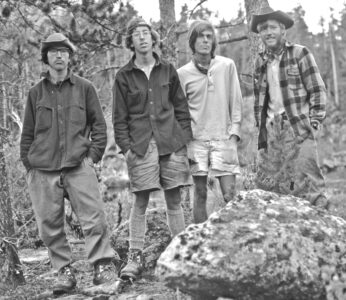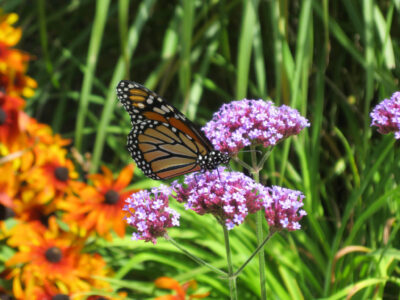Drone dreams
That’s a fair flower.
The other day, fall sent an unrequited love note in a chilly 44-degree envelope.
Wrapped in my bathrobe, I zipped out to feed the hens and found this darling bumblebee clinging in sleep under a flower. I turned on my bee GPS, finding them on coneflowers, hastas and daisies awaiting the power of sunrise. I wondered what bees dream about? Then I was startled; why are they sleeping in flowers and not safe in the hive? Then, where do they go in winter? Even local apiaries with constant monitoring struggle to keep domestic bees alive.
According to Dr. Dave Goulson, a leading expert on bumblebees worldwide, the sleeping bees are males (drones) who leave the hive after the new queens are born. By late summer, the entire colony — dowager queen, workers and drones — dies, ending the cycle. The drones are sent packing; the females survive longer in the hive. Down the research rabbit hole I went: how do bees survive the winters with no hive? They don’t. Bee sanctuaries aren’t a thing.
Visions of creating the first overwintering bumblebee haven sprang to mind. Images of lucky drones leisurely sipping sugar water as winter raged outside sent me off to find Kris. Maybe other people don’t build bumblebee sanctuaries, but my guy can build anything. Can, not will.
“Let’s make an indoor bumblebee sanctuary,” I said casually over dinner. He choked on his burrito and flashed the look of someone enlisted in years of turtle rescue with no ending in sight. “Did you know the drones are forced to leave the hive?” I said. “Yup,” he said, reaching for the guacamole. “Isn’t that sad?” “Not as sad as honey bees, the females swarm them with a kill ball and drag them out. Then they starve.” “What! How do you know this? This is horrible.” “Umm,” he said, “I went to fifth grade.”
–
Bees and Boarders
–
It was an easy anthropomorphosis, cultivating compassion for these insect hobos. Transference was easier still. Eviction isn’t just a metaphor. It echoes painfully in the real world, where exile isn’t by bees but by government and policy.
But here’s the thing: removed from the hive is a biological necessity, not malice. The drones are cast out because they have no role in winter survival. It’s evolution. Was I trying to save the bees, because I couldn’t fix the helpless feeling that rose when I considered the human equivalent?
Deportations don’t just evict people; they exile them, shattering families, futures, communities. People aren’t wrapped with flower petals to hold them in transition. They don’t languish in the scent of zinnias, resting and foraging before a graceful death. Deportees are greeted with cold political indifference. The hive expels the unneeded; historically, countries like ours purge the “undesirable” — through ICE deportations, Japanese internment camps, the forced removal of Native Americans and modern anti-homeless laws.
Global spiritual leader Thich Nhat Hanh says, “Letting go gives us freedom, and freedom is the only condition for happiness. If, in our heart, we still cling to anything … we cannot be free.”
Clinging is comfortable. I abandoned my crusade to save all the bees on planet Earth. Freedom requires discipline and acceptance. Now I wait and practice letting go.
The cold will come, flowers will wither and the bees will disappear. We cannot stop winter. We can stop calling what is punishment “the policy.” We are not bound by nature’s laws, we write our own. And in that, we can choose a sanctuary.





